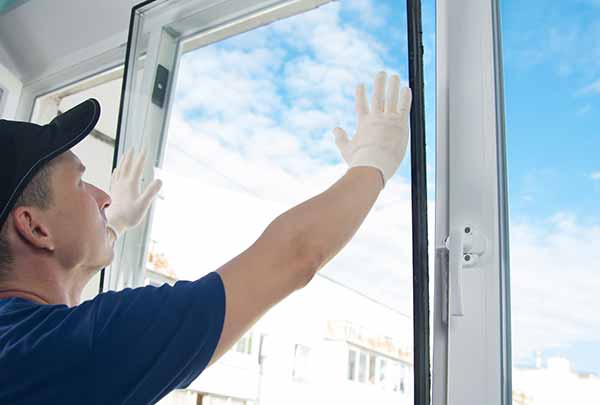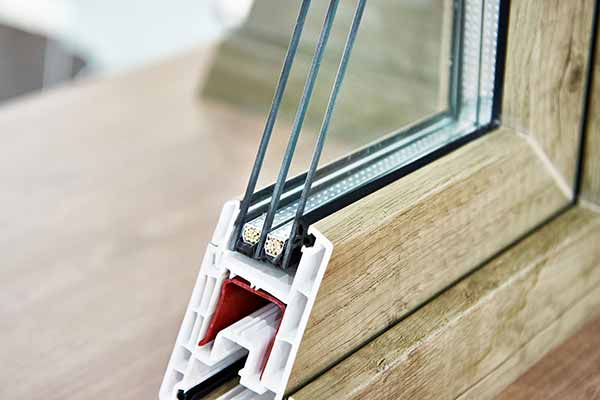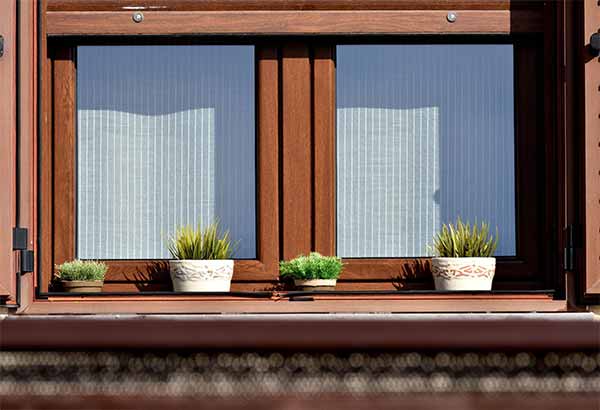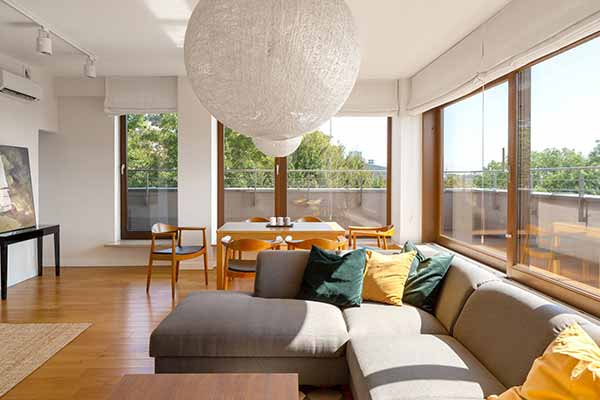Alfred Hitchcock’s 1954 thriller “Rear Window” encapsulates almost everything we love about windows: gazing out and gazing into the world from the comfort of our homes.
Windows also bathe us in sunlight, keep the wind and rain at bay, and connect our dwellings to our environment. Unfortunately, sometimes that connection is felt all too keenly, with chilly drafts in the winter and too much heat in the summer.
Along with not-so-comfortable temperatures, having old, poorly-fitted, or inefficient windows can send energy bills soaring. Fortunately, you can make minor home improvements — including upgrading to energy-efficient windows — to boost your home insulation and reduce your energy costs.
Read on to find out how to pick the best energy-efficient windows. You’ll not only make your home more comfortable to live in but you can reduce your carbon footprint, help protect the environment, and yes, save some money.
Why Should I Install Energy-Efficient Windows?
A typical wall’s surface area is usually 15-20% window. It’s therefore not surprising to learn that 25-30% of a home’s heating and cooling energy use is lost through windows, according to the U.S. Department of Energy (DOE). Just as you have to plug all the holes in a sinking boat, you must insulate all areas of your wall, and that includes windows.
Fitting energy-efficient windows can reduce heat gain and heat loss, making houses more comfortable to be in and cheaper to run. Energy-efficient windows can also help reduce condensation, cold spots, and noise pollution, protect furniture from the sun’s rays, and make your house more secure. These are just some of the benefits of energy efficiency and conservation.
How Do I Know What Energy-Efficient Window to Choose?
Some people opt for DIY window installation. But before replacing or upgrading any windows on your own, be sure you have the tools, knowledge, and ability to carry out the work. Thoroughly research materials and ensure everything you buy has a warranty. Also, don’t be afraid to call in a professional window fitter if things go wrong.
Whether doing solo work or hiring a professional, you’ll need to consider the following to pick the most appropriate windows for your home:
- Your budget
- The climate where you live
- Your building’s architecture
- Window size and placement
For example, kitchens often have casement windows that open like doors to allow extra ventilation. Some people install skylights to bring natural light into dark rooms.
Professionals can also advise on how to make the most of winter sunshine to warm your home and how windows can help keep your home cool in summer too.
Pro tip: Find more seasonal energy tips to maximize comfort and savings throughout the year.
How Do Energy-Efficient Windows Work?
Energy-efficient windows use a variety of strategies to improve their insulating performance. Better insulation means your house will stay warmer in the winter and cooler in the summer.
There are several ways to improve window insulation, whether you want to install replacement windows or upgrade existing windows.
Low-e: Short for low-emissivity, low-e window glass has a thin coating that allows natural light in while deflecting the sun’s UV rays; low-e windows are also good at insulating.
Spacer systems: Space between panes on double-pane and triple-pane windows improves insulation qualities.
Frames: Varying frame materials change a window’s insulation value.
What Are the Various Types of Energy-Efficient Windows?
There are many types of windows for homes made from several materials, each with advantages and disadvantages.
The first consideration is how many panes of glass your windows will have:
- Single-pane windows
- Double-pane windows with two sheets of glass
- Triple-pane glass windows with three sheets of glass
These windows are all set into one frame, and each window glass has different levels of energy efficiency.
What Is a Low-e Window and Is It Energy-Efficient?
You may also see windows marked as low-e, or low emissivity glass. Low-e glass windows have a thin coating that helps to reflect heat, improving its insulating capabilities.
In winter, warmer air inside a home reflects into the room thanks to the coating. In summer, the reverse happens, with cooler air from air conditioning staying inside. This heat flow pattern is suitable for keeping energy bills down.
How Do Double-Pane and Triple-Pane Windows Insulate?
Double pane and triple-pane windows have their glass panes spaced out within a frame. Gas fills the gaps between the panes, called spacers.
Krypton and argon gases are pumped into the spacers to increase the window’s energy efficiency. Both krypton and argon are denser than air, thus they slow heat traveling through windows, boosting the window’s insulation properties.
How Does Window Frame Construction Help Energy Efficiency?
“Window frame materials are as important a consideration as the number of panes of glass you choose for your windows.
Frames will need to suit your budget, your home’s architectural design, and climate. Here are some popular window frame materials.
Vinyl window frames: These are affordable, low maintenance, and offer great insulation. They can also be custom-built to any size in many colors. These windows work well in humid climates because they don’t expand or twist easily.
Aluminum window frames: These are similar in price and maintenance to vinyl windows but are more durable, which is especially important if you live in an area with extreme weather.
Wood window frames: You can get fantastic insulation when wood frames are properly installed. Make sure you check your weather as wood can warp in humid climes and lose efficiency.
Fiberglass window frames: Fiberglass offers excellent insulation and is very strong, rigid, and should only be installed by professionals. This type of window material may not be ideal for new constructions that move as they settle. These windows should outlast the other frame types but may cost more.
What’s the Difference Between Energy Star and NFRC Ratings?
The United States has two types of window ratings: Energy Star and NFRC ratings. As a general rule, make sure your new windows are Energy Star-certified, then check their NFCR performance ratings.
Energy Star-certified windows guarantee that the window or skylight meets or exceeds your state’s energy performance standard.
The National Fenestration Ratings Council (NFRC) applies a U-factor to each window and its Solar Heat Gain Coefficient (SHGC). Low U-factors means less heat gain or heat loss, and low SHGC numbers also mean fewer UV rays pass through the glass.
What’s the Difference Between R-value and U-value?
Three values measure a window’s energy efficiency. They are as follows:
R-value: Measures a material’s heat resistance and its ability to resist heat flow from one side to another. A higher R-value means more insulation.
U-factor: Measures heat loss or heat gain through the glass, and you’ll want as low a U-factor as possible for best performance.
Solar Heat Gain Coefficient (SHGC): The SHGC tells you how much solar radiation or UV rays the glass allows. The lower the number, the less heat the glass lets pass, an essential factor for people that live in warm, sunny climates.
Enter your ZIP Code and compare electricity rates
What Else Does the NFRC Label Tell Me?
NFRC labels display visible transmittance ratings from 0 to 1; the higher the number, the more natural light the window’s glazing allows in. Visible transmittance is vital for homeowners who want natural daylight to illuminate their homes.
Air leakage tells you how much air enters a room through the window, with a range of 0.3 (high) or less. A lower number means fewer drafts.
Does Where I Live Mean I Need Different Windows?
Buildings in different climates have varying insulation needs. Like choosing what to wear in different seasons, picking windows suited to your area’s weather makes sense. There are windows to help keep you warm, and those that can help you keep cool.
The International Energy Conservation Code (IECC) has defined various climate zones with general advice on window and skylight U-factors and SHGC requirements.
There is a general IECC-based map of the United States and each zone’s suggested window requirement. It is for advice and learning — please talk to professional fitters about the best window installation for your home.
Can Old Windows Be Energy Efficient?
Many factors determine whether old windows are as energy-efficient as new windows. However, Energy Star-certified windows could reduce heating and cooling costs by an average of 12%.
Older single-pane windows are not very energy-efficient because the single glass barrier easily allows heat transfers. Cold outside air can get in during winter, and warm air from inside escapes. In summer, warm outdoor air gets into a home, and cool air escapes outside.
There are some simple ways for homeowners to reduce this heat flow:
- Seal air leakage: Seal any air leaks with caulk and replace old weather stripping.
- Install window film: Reduce heat loss and heat gain by up to 55% by adding plastic window film.
- Use bubble wrap: Indeed, bubble wrap is a cheap and simple way to insulate single-pane windows.
- Don’t forget the drapes: Heavy, insulating drapes that cover the window entirely can reduce heat loss.
- Update your frames: Upgrade to energy-efficient window frames; however, you may wish to consider new windows if you are going this far.
What Is the Energy Efficiency of Windows?
Exact figures vary, but many experts think that around 10% of a home’s heat loss is through the windows. The energy efficiency of windows depends on the number of panes, the material, its R-value and U-factor, and its Solar Heat Gain Coefficient (SHGC).
Will Replacement Windows Save Me Money at Home?
We’ve seen that better insulation thanks to Energy Star-certified windows can reduce heating and cooling costs by an average of 12%. Extra efficiency will lead to lower energy use and energy bills.
There are secondary savings too. Energy-efficient windows that block the sun’s UV rays can protect furniture and furnishings inside the home. Drapes, wood floors, and other materials can fade and discolor after long-term exposure to sunshine. Windows with suitable coatings reduce the strength of the UV rays that can damage your home.
There may be tax credits to help purchase Energy Star-certified windows, although not for installation. Some are retroactive, so be sure to check with Energy Star.
What Is the Most Energy-Efficient Window?
The most energy-efficient window very much depends on all the window’s materials. Low emissivity glass is the most energy-efficient glass for double and triple glazing.
Why Is Window Energy Efficiency Vital for the Environment?
More than half (51%) of the average U.S. household’s energy consumption goes on space heating and air conditioning. In 2020, some 79% of the country’s energy production was from fossil fuels — namely, coal, petroleum, and natural gas.
These fossil fuels emit carbon into the atmosphere, contributing to global warming and climate change.
Energy-efficient windows help reduce a home’s energy use, meaning fewer fossil fuels need to be burned to meet demand. Better-insulated buildings help reduce carbon emissions which harm the environment.
Pro tip: Learn some easy ways to create an energy-efficient home that can reduce your carbon footprint and save you money.
Why Do I Feel Cold When I’m Next to a Closed Window?
Single-pane windows are notorious for feeling cold during chilly winters. A single-pane warms thanks to the heat in a room and transmits it outside. Double-pane and triple-pane windows have spacers filled with gas to reduce this heat loss, but you’ll still feel some cold. Air leakage, drafts, and poorly-fitted frames will also add to the chill.
Energy-Efficient Windows Are Better for You and the Planet
Windows play a large part in a building’s insulation capability, as well as their contribution to its aesthetics and comfort. There are windows to help keep you warm and those that can help you stay cool.
Energy-efficient windows represent an investment that, long-term, can repay homeowners with savings on energy bills. It’s well worth asking a professional to assess your home and advise on the best plan for your budget. They’ll take into account the climate, materials, and window position and answer any questions you may have.
Combine replacement windows with energy-efficient lighting and a green energy plan, and you could be saving energy, money, and the planet at the same time.
Brought to you by energysavings.com
All images licensed from Adobe Stock.
Featured image:




